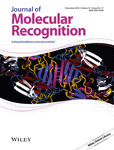Journal list menu
Export Citations
Download PDFs
ISSUE INFORMATION
RESEARCH ARTICLES
DNA physical interaction mediated b-lymphoma treatment offered by tetra benzimidazole-substituted zinc (ii) phthalocyanine derivative
- First Published: 27 June 2018
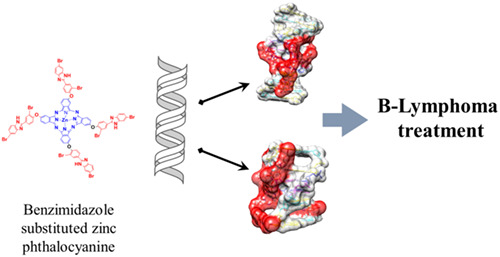
Small molecules that establish physical interaction with DNA serve as a potential therapeutic tool in cancer therapy. Benzimidazole substituted zinc phthalocyanine offers cure for B-lymphoma by using dual binding modes with DNA molecule (minor groove binder and intercalator). Low malignant Follicular lymphoma cells found more sensitive to this compound as compared to high malignant Burkitt's lymphoma, thus advocates its significant role in lymphoma treatment.
Esterase activity and conformational changes of bovine serum albumin toward interaction with mephedrone: Spectroscopic and computational studies
- First Published: 19 June 2018
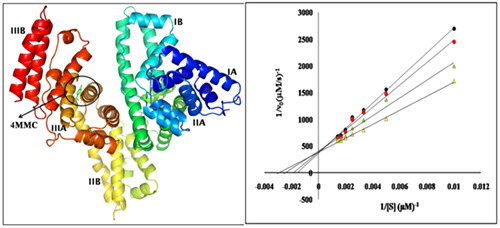
Investigating the interactions between mephedrone, a psychoactive drug, and serum protein is crucial. Mephedrone has the dopaminergic and serotonic effects on the nervous system of humans. The interaction between mephedrone and bovine serum albumin (BSA) is investigated using various biophysical techniques in combination with computational methods. The mephedrone principally binds at the II site of BSA and induces conformational changes, which provide enhance catalytic efficiency of BSA.
Study on the interaction of antidiabetic drug Pioglitazone with calf thymus DNA using spectroscopic techniques
- First Published: 25 June 2018
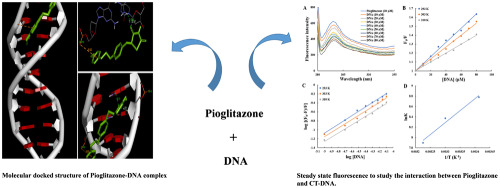
Interaction of Pioglitazone with calf thymus DNA was studied using different biophysical and molecular docking studies. Complex formation was studied using UV-visible spectroscopy, while experiments like dye displacement assay, fluorescence spectroscopy, CD spectroscopy, DNA melting study, and viscosity measurements revealed the groove binding nature of Pioglitazone. Molecular docking study also supported our experimental findings.
Quantum mechanical studies on dioxin-imprinted polymer precursor composites: Fundamental insights to enhance the binding strength and selectivity of biomarkers
- First Published: 01 July 2018
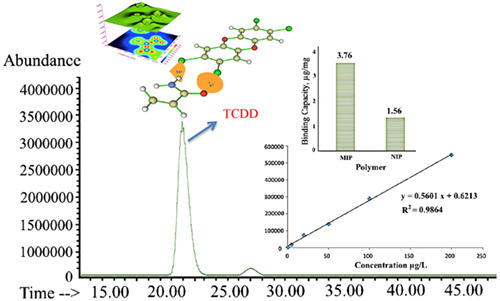
This research article provides a better understanding of important interactions for the development of molecularly imprinted technology. This work will help to improve the selective detection and remediation of a particular dioxin, in environmental samples. Moreover, the theoretical simulation used in this research article is rapid and reliable for the combinatorial screening of polymer precursors in experimental-free way to design nano-porous polymeric material for environmental application.
SPECIAL ISSUE ARTICLE
Insights into the morphological pattern of erythrocytes' aging: Coupling quantitative AFM data to microcalorimetry and Raman spectroscopy
- First Published: 06 June 2018
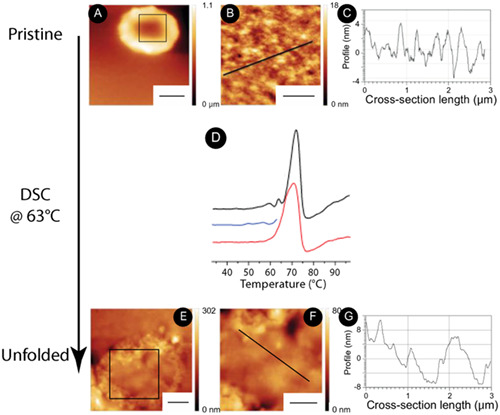
We characterized the pattern of erythrocytes' ageing in starvation conditions through an experimental approach that combined atomic force microscopy (AFM), differential scanning calorimetry (DSC), and Raman spectro-microscopy. Moreover, by using a DSC-based procedure consisting in the warming and chilling of the samples at specific temperature capable to induce unfolding of specific cytoskeletal proteins, we were able to understand the role of selected molecular components in the development of structural anomalies and in the induction of specific ageing-related morphologies.




